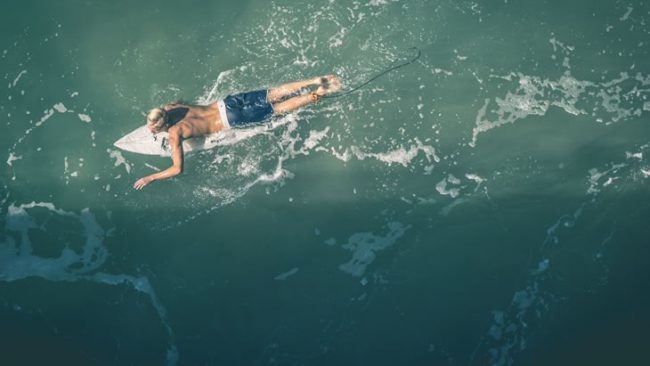Knowing about the deep water bodies like seas and oceans has always fascinated not only the scientific community but common people also. Science and technology might be taking time to explore the deep of seas and oceans and bring the truth to people but there are many hypothesis being circulated from time immortal among common people about the deep inside of the seas and oceans. People think of different kind worlds to exist at the bed of the seas and oceans not only in terms of aquatic life and minerals but also some kind of human life. The intense pressures in the deep ocean make it an extremely difficult environment to explore. Deep sea and ocean explorations have always been difficult for mankind with limited scope of technology but such explorations big or small have always been carried out by some enthusiasts. In addition to minerals, unusual animals are also expected at the bottom of the ocean. Studies point out that even at 13,000 feet below the surface, where temperatures are near freezing and there’s no sunlight, researchers have discovered living creatures such as fish, coral, crustaceans, jellyfish and worms. Information from ocean exploration can help us understand how we are affecting and being affected by changes in Earth’s environment, including changes in weather and climate. Further, insights from ocean exploration can help us better understand and respond to earthquakes, tsunamis, and other hazards.
About Seas and Oceans
The Seven seas are the Arctic, North Atlantic, South Atlantic, North Pacific, South Pacific, Indian and Southern Oceans. Historically, there are four named oceans: the Atlantic, Pacific, Indian, and Arctic among them the Pacific, Atlantic, and Indian are the most commonly known ones. However, most countries – including the United States – now recognize the Southern (Antarctic) as the fifth ocean. The five oceans are connected and are actually one huge body of water, called the global ocean or just the ocean. In terms of geography, seas are smaller than oceans and are usually located where the land and ocean meet. Typically, seas are partially enclosed by land. The average depth of the ocean is about 12,100 feet and the deepest part of the ocean is called the Challenger Deep and is located beneath the western Pacific Ocean in the southern end of the Mariana Trench, which runs several hundred kilometers southwest of the U.S. territorial island of Guam. More than 80% of the ocean remains unexplored. And because it’s difficult to protect what we don’t know, only about 7% of the world’s oceans are designated as marine protected areas (MPAs). The average depth of the Atlantic Ocean is 3,900 meters, or just over 2 miles and if we can reach a depth of 4,000 meters, we can explore 63% of the world’s ocean floor.
Deep ocean exploration
It is just impossible for human alone to think of deep ocean exploration as human beings can withstand 3 to 4 atmospheres of pressure, or 43.5 to 58 psi. Water weighs 64 pounds per cubic foot, or one atmosphere per 33 feet of depth, and presses in from all sides. The ocean’s pressure can indeed crush human and human bone crushes at about 11159 kg per square inch. This means we’d have to dive to about 35.5 km depth before bone crushes. This is three times as deep as the deepest point in our ocean. But with advancement of technology, today, buoys and water column samplers are used to monitor sea surface conditions and water quality factors, coring devices collect sediment samples, sonar helps create maps of the seafloor, and remotely operated vehicles (ROVs) allow us to safely and efficiently explore all parts of the ocean. The most-recent estimate of the average ocean depth of 3,682 meters (12,080 feet) was calculated in 2010 by scientists from National Oceanic and Atmospheric Administration (NOAA) and Woods Hole Oceanographic Institution using satellite measurements. These measurements revealed that the seafloor is much bumpier and mountainous than previously known and resulted in an average ocean depth that is less than previously calculated. While satellite measurements have yielded better estimates of ocean depth than we have had in the past, rather than measuring the seafloor itself, satellites actually look at the sea surface and detect changes over features like a mountain on the seafloor. So the picture of the seafloor which scientists get is far from perfect and is not a very good resolution. High-resolution seafloor mapping, such as that conducted on NOAA Ship Okeanos Explorer, is needed to fine tune the satellite data. Currently, we have only mapped about 10 percent of the Earth’s seafloor in high resolution, meaning that estimates of average ocean depth remain just that.
On 23 January 1960, two explorers, US navy lieutenant Don Walsh and Swiss engineer Jacques Piccard, became the first people to dive 11km (seven miles) to the bottom of the Mariana Trench. American undersea explorer Victor Vescovo has become the first person to dive to the deepest points of the earth’s five oceans, and he’s now back on dry land to reveal his discoveries. Victor Vescovo reached a deeper part of Challenger Deep at 35,853 feet, breaking the record for the deepest dive in DSV Limiting Factor. His dive was part of the Five Deeps Expedition to reach the bottom of every ocean on Earth. It’s been a record-breaking expedition in more ways than one. Vescovo’s trip to the Challenger Deep, at the southern end of the Pacific Ocean’s Mariana Trench, back in May, was said to be the deepest manned sea dive ever recorded, at 10,927 meters (35,853 feet). At the bottom of each ocean, the expedition conducted a sonar-mapping exercise to survey the watery depths, forming part of the Nippon Foundation-GEBCO Seabed 2030 Project to map the world’s seafloor in detail by the end of 2030. Over the course of the expedition, the explorers mapped over 300,000 square kilometres of seafloor, traveling over 46,000 miles around the world. There have also been exciting scientific discoveries along the way.
- At the bottom of the Indian Ocean, in the void of the Java Trench, Vescovo and his team spotted an “extraordinary gelatinous animal” which they said did not resemble anything seen before under sea.
- More disturbingly, at the bottom of the Pacific Ocean’s Mariana Trench, Vescovo spotted what he said was a plastic bag and candy wrappers, proving even the deepest depths of the world’s ocean aren’t exempt from manmade interference.
Indian efforts towards deep ocean mission
The Union Cabinet has approved the long pending Deep Ocean Mission, which among other things involves developing a submersible vehicle that will allow a crew to plunge 6,000 metres into the ocean and hunt the floor for precious metals. India has been allotted a site of 75,000 square kilometres in the Central Indian Ocean Basin (CIOB) by the UN International Sea Bed Authority for exploitation of polymetallic nodules (PMN). These are rocks scattered on the seabed containing iron, manganese, nickel and cobalt. Being able to lay hands on a fraction of that reserve can meet the energy requirement of India for the next 100 years, according to official estimates. The exploration studies of minerals will pave way for the commercial exploitation in the near future, as and when commercial exploitation code is evolved by the International Seabed Authority, a United Nations organisation. There are six components to the programme.
- In the first component, a manned submersible will be developed to carry three people to a depth of 6,000 metres in the ocean with a suite of scientific sensors and tools. An Integrated Mining System will be also developed for mining polymetallic nodules at those depths in the central Indian Ocean.
- The second component involves developing Ocean Climate Change Advisory Services, which entails developing a suite of observations and models to understand and provide future projections of important climate variables on seasonal to decadal time scales.
- The third component is searching for deep sea flora and fauna, including microbes, and studying ways to sustainably utilise them.
- The fourth component is to explore and identify potential sources of hydrothermal minerals that are sources of precious metals formed from the earth’s crust along the Indian Ocean mid-oceanic ridges.
- The fifth component involves studying and preparing detailed engineering design for offshore Ocean Thermal Energy Conversion (OTEC) powered desalination plants.
- The final component is aimed at grooming experts in the field of ocean biology and engineering to translate research into industrial applications and product development through on-site business incubator facilities.



